INDIAN ARMED FORCES CHIEFS ON OUR RELENTLESS AND FOCUSED PUBLISHING EFFORTS

The insightful articles, inspiring narrations and analytical perspectives presented by the Editorial Team, establish an alluring connect with the reader. My compliments and best wishes to SP Guide Publications.

"Over the past 60 years, the growth of SP Guide Publications has mirrored the rising stature of Indian Navy. Its well-researched and informative magazines on Defence and Aerospace sector have served to shape an educated opinion of our military personnel, policy makers and the public alike. I wish SP's Publication team continued success, fair winds and following seas in all future endeavour!"

Since, its inception in 1964, SP Guide Publications has consistently demonstrated commitment to high-quality journalism in the aerospace and defence sectors, earning a well-deserved reputation as Asia's largest media house in this domain. I wish SP Guide Publications continued success in its pursuit of excellence.
- Prime Minister Modi Visits Punjab’s Adampur Air Base, Interacts with Airmen after Successful ‘Operation Sindoor’; Stern Message to Pakistan
- The layered Air Defence systems that worked superbly, the key element of Operation Sindoor
- Operation Sindoor | Day 2 DGMOs Briefing
- Operation Sindoor: India strikes back with Precision and Purpose
- Operation Sindoor: Resolute yet Restrained
- India’s Operation Sindoor Sends a Clear Message to Terror and the World – ‘ZERO TOLERANCE’
- Japan and India set forth a defence cooperation consultancy framework, talks on tank and jet engines
- Terrorist Attack in Pahalgam in Kashmir: Unfolding a long surgical war against PAK
- Lt General Pratik Sharma takes over Command of Indian Army's Northern Command
Boeing fields Super Hornet as India's next carrier-based fighter
Potential economic impact of $3.6 billion over 10 years to the Indian economy with the Boeing F/A-18 Block III Super Hornet as India's carrier-based fighter
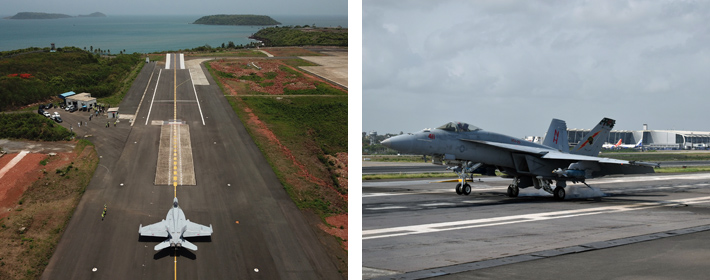
Indian Navy is evaluating options and is close to finalising the Multi-Role Carrier Borne Fighters (MRCBF), with at least 26 to be procured under the programme. The trials have been successfully concluded at the shore-based test facility (SBTF) in Goa. The time is crucial as the INS Vikrant, India's first indigenously designed and constructed aircraft carrier is ready for being commissioned into the service of the Indian Navy on September 2, 2022. The requirement to finalise and induct the fighters to operate from both its carriers (INS Vikramaditya and INS Vikrant) has gained urgency.
Work and technology transfer for the advanced F/A-18 Super Hornet fighter jets with Indian industry is proposed
Hornet Industry Team (HIT) comprising General Electric, Northrop Grumman and Raytheon was in the capital recently, detailing their Make in India initiatives, and outlining the efforts being made to support the modernisation of the Indian armed forces, concerning the F/A-18 Super Hornet.
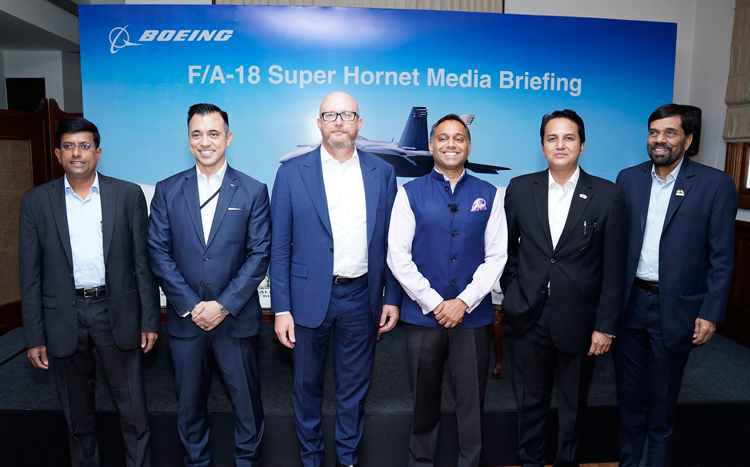

As part of this effort, Boeing anticipates $3.6 billion in economic impact on the Indian aerospace and defence industry over the next 10 years. "As a trusted partner of India's aerospace sector for more than 75 years, Boeing has made significant investments in India's aerospace and defence industry and will continue to do so. Our investments span the entire spectrum of local manufacturing, engineering and R&D, and training and skilling to help build a robust Atmanirbhar Bharat in aerospace and defence," said Salil Gupte, President, Boeing India. "The selection of F/A-18 Super Hornet for India will help boost investments in India's defense industry." Boeing states that the economic impact would be over and above Boeing's current offset obligations and plans in the country, with the F/A-18 Super Hornet as India's next carrier-based fighter.
The two-seater variant offers availability for carrier missions, can operate on land-based missions and as trainers
Salil stressed Boeing's plans to build on its existing industrial base with continued investments in India across five pillars. These include supply chain development and manufacturing; engineering and technology transfer; long-term support and training; infrastructure investments; and contributions of the Hornet Industry Team (HIT). As part of the Supply Chain Development and Manufacturing, Boeing has added several new Micro, Small and Medium Enterprises (MSMEs) suppliers accounting for 26 percent of the suppliers in India. The plan is also to evaluate a sizeable number of machined assemblies that could be placed with Indian suppliers.
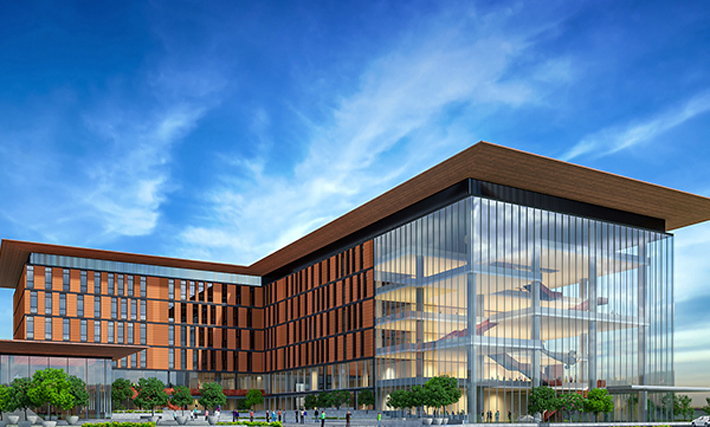
Boeing envisions working closely with industry and the U.S. and Indian governments to share technology and transfer work of the F/A-18 fighter jets in India. Boeing will leverage its Engineering & Technology Center (BIETC) and the pool of 3,000+ engineers and innovators in Bengaluru and Chennai.
"Boeing has made significant investments in the country. A 43-acre state-of-the-art engineering and technology campus is under construction in Bengaluru. This campus will be the largest Boeing-owned facility of its kind outside the U.S. Boeing India employs about 4,000 employees. Boeing's joint venture with Tata - Tata Boeing Aerospace Limited - manufactures aerostructures for Apache attack helicopters for global customers out of Hyderabad. In addition, foreign direct investment (FDI) of $200 million has been made by Boeing towards aerospace and defence," mentioned Salil. He added, "The diversity and strength of the Hornet Industry Team (HIT), has the potential to deliver significant benefits to Indian industry."
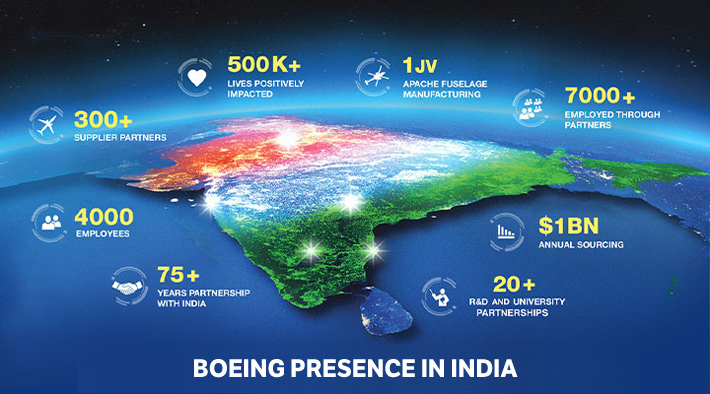
"The Block III Super Hornet we are offering to the Indian Navy has the most advanced and critical capability. With its open architecture design and continuously evolving capability suite, the Super Hornet will outpace current threats, facilitate rapid capability insertion and has unmatched affordability," said Steve Parker, Vice President and General Manager, Bombers & Fighters, Boeing Defense, Space & Security. "Boeing is making investments in advanced technologies and capabilities on our Block III Super Hornet and the F-15EX today so we will be ready for the future. The Indian Navy will benefit from these investments for decades to come."
The F/A-18 Super Hornet Block III on offer to the Indian Navy is the world's most advanced, combat-proven, multi-role frontline naval fighter that offers unique and differentiated capabilities and full compatibility with both INS Vikramaditya and INS Vikrant, Indian Navy carriers. The fighter is the backbone of the US Navy. Designed as a carrier-based fighter it has the proven wing-fold solution for carrier lift fitment and enabling accommodation of more aircrafts onboard, supporting the mission. F/A-18 Block III Super Hornet offers a twin seat advantage, requires minimal support equipment and has the lowest cost per flight hour to operate with high mission readiness rates.
"Fighters have been core to Boeing's DNA for more than 80 years. To press on with that strong heritage, our investments in multi-domain operations, manned-unmanned teaming, autonomous systems and other capabilities will position us for the future and will keep our customers at the cutting edge of air defense," —Steve Parker, Vice President and General Manager, Bombers & Fighters, Boeing Defense, Space & Security
"Designed from its inception as a carrier-based fighter for high-loading, high-stress operations, the F/A-18E/F Super Hornet Block III will bring advanced, next-generation capabilities that will help the Indian Navy meet emerging and future threats. In addition, along with the contributions to the Indian economy by our Hornet Industry Partners - General Electric, Raytheon, Northrop Grumman, the Super Hornet will deliver significant benefits to India's defence sector," said Alain Garcia, Vice President, India Business Development, Boeing Defense, Space & Security and Global Services.
As the U.S. Navy's frontline fighter with over 800 aircraft in operation around the world, the Block III Super Hornet offers opportunities for naval aviation cooperation between the United States and Indian navies for carrier integration, training, and technology transfer.
Super Hornets will be sustained in India, in partnership with the Indian Navy as well as India and U.S.-based partners throughout the lifecycle of the aircraft
The F/A-18 Block III Super Hornet can act as a force multiplier with interoperability features, its advanced network architecture enables P-8I interface and other U.S.-origin helicopters and future carrier-based unmanned systems.
The decision on the Carrier Borne Fighters is expected by the year's end. Vice Chief of the Indian Navy, Vice Admiral S.N. Ghormade, responded to SP's on the status of the Carrier Borne Fighters "Trials for deck-based fighters for the Indian aircraft carrier are complete and it is under staff evaluation. We will take a decision as early as possible, likely by the year-end."
SP's Editor-in-Chief, Jayant Baranwal interacted with the team HIT during the briefings:

AND GENERAL MANAGER, BOMBERS & FIGHTERS,
BOEING DEFENSE, SPACE & SECURITY
Jayant Baranwal: What is the approximate age likely for Super Hornet particularly when we also witness efforts are on not just for 5th but 6th Gen?
Steve Parker: F/A-18 Super Hornet Block III can easily clock 10,000 hours which would be a 25-30 years lifespan approximately. That's a big game changer. This is 30 percent more than the lineage, which has a lifespan of 20-25 years with 6,000 flying hours, much more than any other competitor. Block III has a lighter fuselage, 5th generation avionics, advanced technologies-based armaments, radar, etc, and if we were to categorise it, we can term it as 5 minus.
Jayant Baranwal: Can you share the number of Super Hornets flying with navies around the world excluding the US? And the number of countries operating the same?
Steve Parker | Alain Garcia: Out of the total of 800 aircraft delivered, the majority are being operated in the US as there are very few navies in the world that have the capacity of aircraft carrier platforms. The US has 11 aircraft carriers and we can safely say that a Super Hornet is deployed every single day of the year in any weather condition. They are the backbone of the US Navy.
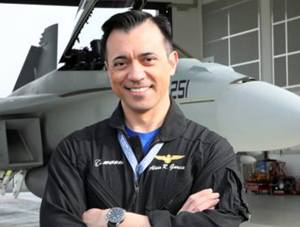
INDIA BUSINESS DEVELOPMENT, BOEING DEFENSE,
SPACE & SECURITY AND GLOBAL SERVICES
Jayant Baranwal: Will the Indian industries benefit in any ways out of the already flying Hornets?
Salil Gupte | Alain Garcia: Hundred percent, out of the 800 Hornets already flying, Indian industry has already been making elements, components and contributing to these aircrafts for years after years. Indian Navy will automatically benefit out of the lessons learnt from the US Navy on how to maintain and operate on those platforms. Lifecycles of the F/A-18 Super Hornet Block III will be 10,000 hours, it is very economically affordable as compared to the competitor.
Jayant Baranwal: What is the approximate number of aircrafts produced per year?
Steve Parker: At present, there are 24 aircraft produced in a year, and that can be easily scaled up.





